The year 1974 saw the appearance of two remarkably different explorations of the tense interplay between conscience and obedience, with the horrific experience of Nazi Germany offering historical background for both books: Stanley Milgram’s Obedience To Authority and Gitta Sereny’s Into That Darkness. However entangled their subjects may be, the subtitles reveal strikingly different ambitions, for while Milgram proposes “an experimental view”, Sereny sets forth on “an examination of conscience”. Inside the dark wood of morally compromised obedience, these two paths will lead us into very different places.
In his first chapter, Milgram makes clear the underlying motivation for his lengthy series of obedience experiments, which began shortly after the trial of Adolf Eichmann in 1961:
It has been reliably established that from 1933 to 1945 millions of innocent people were systematically slaughtered on command. Gas chambers were built, death camps were guarded, daily quotas of corpses were produced with the same efficiency as the manufacture of appliances. These inhumane policies may have originated in the mind of a single person, but they could only have been carried out on a massive scale if a very large number of people obeyed orders.
Consistent with the parameters of the experiments, a summary exposition of which occupies his first nine chapters, Milgram introduces the problem of individual conscience within the context of systems theory:
The presence of conscience in men can be seen as a special case of the more general principle that any self-regulating automaton must have an inhibitor to check its actions against its own kind, for without such inhibition, several automata cannot occupy a common territory.
He next discusses the problems posed by such an inhibitor when placed within the hierarchy of complex systems, whereby efficient and preferably immediate compliance best achieves the objectives of the system:
Therefore, when the individual is working on his own, conscience is brought into play. But when he functions in an organizational mode, directions that come from the higher-level component are not assessed against the internal standards of moral judgement. Only impulses generated within the individual, in the autonomous mode, are so checked and regulated.
Because being part of the system assures survival and delivers numerous other secondary benefits to the individual, potentially disruptive autonomy is “checked”, identity becomes “agentic”, and the individual will thereby execute the commands of superiors within the hierarchy, free from the cumbersome inhibitions of conscience:
From a subjective standpoint, a person is in a state of agency when he defines himself in a special situation in a manner that renders him open to regulation by a person of higher status. In this condition, the individual no longer views himself as responsible for his own actions but defines himself as an instrument for carrying out the wishes of others.
When morally or ethically disturbing consequences of actions come into conflict with the imperatives of the agentic self, undermining the strength of “binding factors”, strains then emerge within the system. Such strains are resolved first through expression of dissent and then, if left unresolved, by outright rejection of the hierarchy through explicit acts of disobedience.
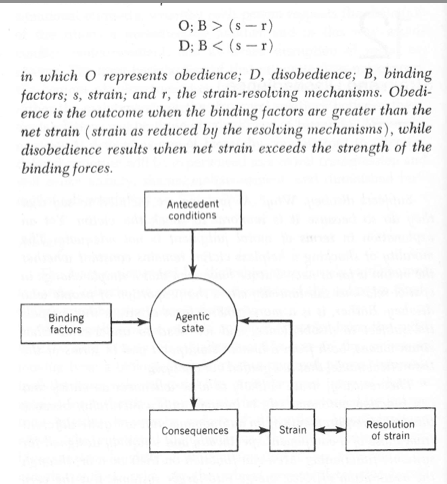
O IS FOR OBEDIENCE
Now let us enter Gitta Sereny’s Into That Darkness, her prolonged examination of the conscience of one such agentic self: Franz Stangl, Kommandant of Sobibor and Treblinka, with prior experience in the Tiergarten Euthanasia Program. Sereny spent seventy hours talking with Stangl in a style that might best be described as empathic interrogation, her subtle intelligence slowly penetrating elaborately entrenched defenses, present since childhood yet perfected in the camps. She then spent eighteen months examining documents and cross-checking Stangl’s account of himself with Treblinka survivors and other witnesses, including his wife, Theresa, who had consistently urged dissent and disobedience, with little effect on agent Stangl. Over the course of the examination, Sereny leaves no doubt about what happens to a buried conscience: it rots.

AGENTIC STRAINS
Assigned to the point of maximum strain within the tight binders of the Nazi hierarchy, Stangl managed the messy business of genocidal extermination, applying his considerable administrative and creative talents to the task, details of which are exhaustively recorded by Sereny. Like so many before him, Stangl later tried to defend himself by claiming, in Milgram’s terms, that his autonomous self was absent from the scene, and that he was present only as an agentic functionary, performing his assigned duty within the hierarchy with the same professional diligence he would bring to any assignment:
FS It was a matter of survival – always of survival. What I had to do, while I continued my efforts to get out, was to limit my own actions to what I – in my own conscience – could answer for. At police training school they taught us (…) that the definition of a crime must meet four requirements: there has to be a subject, an object, an action and an intent. If any of these four elements are missing, then we are not dealing with a punishable offense.
GS I can’t see how you could possibly apply this concept to the situation?
FS That’s what I am trying to explain to you; the only way I could live was by compartmentalizing my thinking. By doing this I could apply it to my own situation; if the ‘subject’ was the government, the ‘object’ the Jews, and the ‘action’ the gassings, then I could tell myself that for me the fourth element, ‘intent’ [he called it ‘free will’] was missing.
Yet Sereny does not let the schematic flow chart of such well worn defenses stand uncontested. Like a forensic anthropologist delicately yet firmly exposing the contours of a disappeared corpse, she enters into the death pit of Stangl’s conscience to assemble, fragment by fragment, the awful evidence of his guilt. There is so much to be said about this remarkable book, and the rare interlocutory skill of its author; I am sure to return to her often in months to come. For now, though, consider Stangl’s final – halting – confession, the extraordinary “farewell” exchange with Sereny whereby his “agentic self” finally gives up the ghost; for the first and only time, the former Kommandant Stangl comes face to face with the gaping oblivion of his own existential responsibility. In the interest of placing maximum focus on the power of Sereny’s interrogation, I have removed all narrative linkages, leaving only the bare transcript of their dialogue:
GS In retrospect, do you think there was any conceivable sense to this horror?
FS Yes, I am sure there was. Perhaps the Jews were meant to have this enormous jolt to pull them together, to create a people, to identify themselves with each other.
GS Do you think that that time in Poland taught you anything?
FS Yes. That everything human has its origin in human weakness.
GS You said before that you thought perhaps the Jews were “meant” to have this “enormous jolt”; when you say “meant to” – are you speaking of God?
FS Yes.
GS What is God?
FS God is everything higher I cannot understand but only believe.
GS Was God in Treblinka?
FS Yes, otherwise how could it have happened?
GS But isn’t God good?
FS No. I wouldn’t say that. He is good and bad. But then, laws are made by men; and faith in God too depends on men – so that doesn’t prove much of anything, does it? The only thing is, there are things which are inexplicable by science, so there must be something beyond man. Tell me though, if a man has a goal he calls God, what can he do to achieve it? Do you know?
GS Don’t you think it differs for each man? In your case, could it be to seek truth?
FS Truth?
GS Well, to face up to yourself? Perhaps as a start, just about what you have been trying to do in these past weeks?
FS My conscience is clear about what I did, myself. But I was there. So yes, in reality I share the guilt … Because my guilt … my guilt … only now in these talks … now that I have talked about it all for the first time … My guilt is that I am still here. That is my guilt.
GS Still here?
FS I should have died. That was my guilt.
GS Do you mean you should have died, or you should have had the courage to die?
FS You can put it like that.
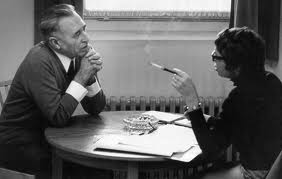
SERENY WITH HER SCALPEL
GS Well, you say that now, but then?
FS That is true. I did have another twenty years – twenty good years. But believe me, now I would have preferred to die rather than this. And anyway – it is enough now. I want to carry through these talks we are having and then – let it be finished. Let there be an end.
Nineteen hours after confronting the truth for the first time, Franz Stangl was dead of a heart attack. In her epilogue, Gitta Sereny, clearly shaken by her journey into the grave corruption of Stangl’s subjectivity, offers a few tentative conclusions of the sort that do not lend themselves to neat formulae or flow charts, conclusions that remain as timely today as the day she wrote them:
I do not believe that all men are equal, for what we are above all other things, is individual and different. But individuality and difference are not only due to the talents we happen to be born with. They depend as much on the extent to which we are allowed to expand in freedom.
There is an as yet ill-defined, little-understood essential core to our being which, given this freedom, comes into its own, almost like birth, and which separates or even liberates us from intrinsic influences, and thereafter determines our moral conduct and growth. A moral monster, I believe, is not born, but is produced by interference with this growth. (…)
This essence, however, cannot come into being or exist in a vacuum. It is deeply vulnerable and profoundly dependent on a climate of life; on freedom in the deepest sense; not license, but freedom to grow: within family, within community, within nations, and within human society as a whole.
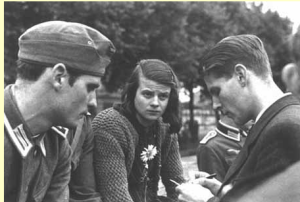


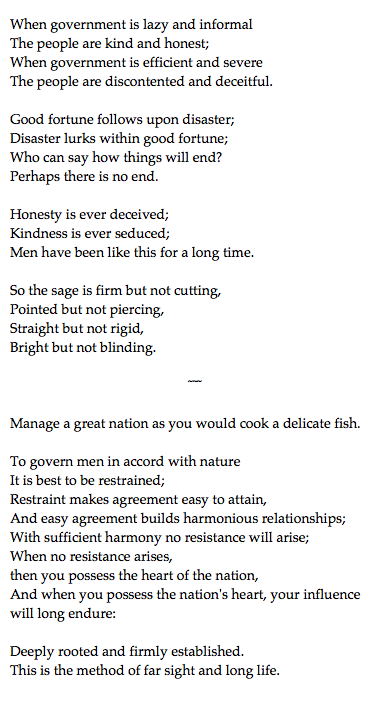

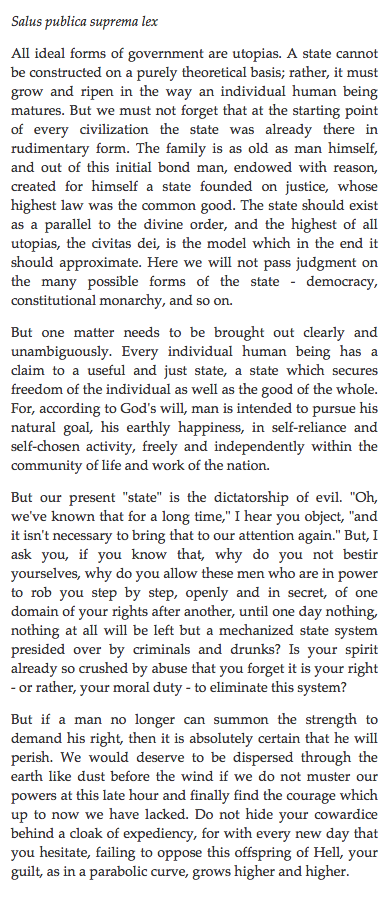
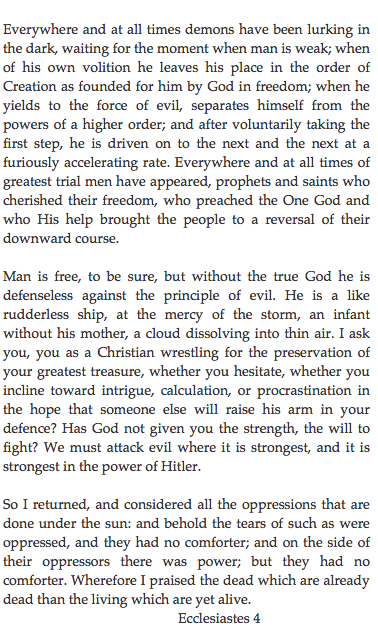

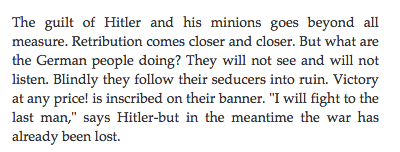
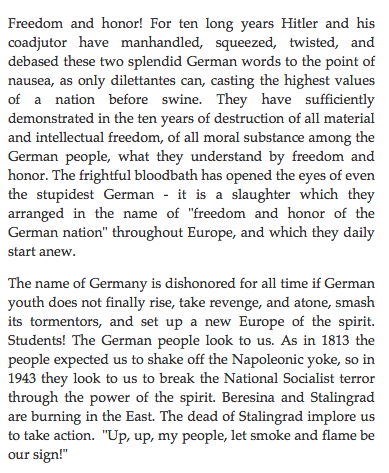






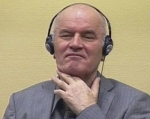
 Returning to Into That Darkness, we discover that Sereny expresses her assessment of this incident slightly differently, writing that this story offered the starkest example of a corrupted personality that she had ever encountered. She goes on to write:
Returning to Into That Darkness, we discover that Sereny expresses her assessment of this incident slightly differently, writing that this story offered the starkest example of a corrupted personality that she had ever encountered. She goes on to write: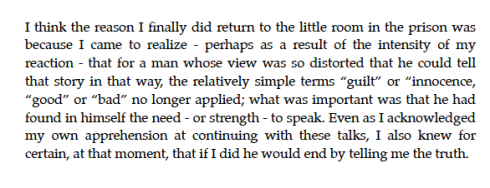 Corrupt suggests not just rotten but also somehow broken (latin, rumpere); and Sereny means personality in the classical sense of that quality which must distinguishes an individual. So in this brief recollection we find Stangl’s personality – his voice, self and sounding; his pneuma, spirit and breath – manifesting the evidence of a collapsed moral consciousness, in which the most injurious and cruel twists of the knife are construed by the actor as gestures of kindness and mercy.
Corrupt suggests not just rotten but also somehow broken (latin, rumpere); and Sereny means personality in the classical sense of that quality which must distinguishes an individual. So in this brief recollection we find Stangl’s personality – his voice, self and sounding; his pneuma, spirit and breath – manifesting the evidence of a collapsed moral consciousness, in which the most injurious and cruel twists of the knife are construed by the actor as gestures of kindness and mercy.




